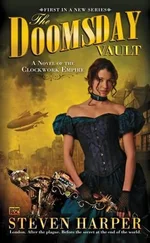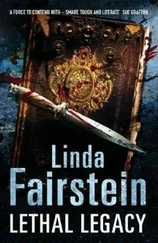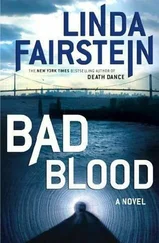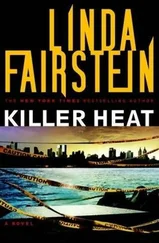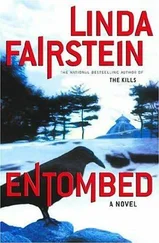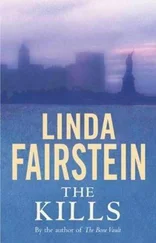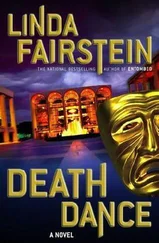“Maybe your French flics haven’t looped the Louvre too often, Mr. T., but I’ve probably spent as much time in this place as you spend looking down your nose at people like me. What would make you think I’ve never been in a museum? ‘Cause I’m a police officer?”
Thibodaux had just turned a dangerous corner. Mike hated that familiar upper-class assumption that he was just another dumb cop, and every time we came up against it in a case investigation, it infuriated him more and more.
“It’s just a manner of speaking. I never meant to offend you.” He looked across the table to Eve Drexler. “Why don’t you call and get Lissen up here, for the detective to speak with.”
“Came here the first time when I was four years old.” Mike was talking to me now. “My dad had his picture taken right in this office, when the police department gave the museum the guns he recovered.”
I didn’t understand what he was referring to, and Thibodaux listened as intently as I did.
“During a raid on a whorehouse, back before I was born, my father and his partner recovered a stash of guns, mixed in with a load of other stolen property. Laid in a warehouse for years, the old property clerk’s office. Meanwhile, he’s telling everyone how beautiful they are, decorated in gold, chiseled steel, and carved ivory with initials on the handle. Story got up to headquarters and someone finally took a look at the stuff.”
Thibodaux stared at Chapman with a bit more interest. “Catherine the Great-the empress’s pistols and hunting guns?”
“Made by Johann Grecke, the royal gunmaker, 1786. Right before they would have been destroyed to make room for the new evidence storage unit, the department had Pop bring them to the curator here. They traced the original owner, he donated them back to the Met, and we were all right in this fancy room for the ceremony. First time I ever saw a bottle of champagne and ate cake off an antique plate. Used to come as often as I could to look at my dad’s treasures.”
“Let me apologize, Detective. I didn’t mean to imply that I thought you were ignorant of the museum. Five million visitors walk in and out of these doors every year, seeing only the objects encased in glass or the canvases hanging on the walls. They never think about what goes on behind the scenes, out of view, to make a place like this work so brilliantly, to give life to all these inanimate things.”
He was turning the charm on now, trying to play up to Chapman and work the hardship angle to his advantage.
Eve Drexler hung up the phone and came back to the table. “Mr. Lissen will be here in ten minutes. I’ve ordered a fresh pot of coffee. And I’ve asked some of the curators who might be useful to your inquiry to be on standby.” She was a model of efficiency.
“Thank you.” The director picked up his folder again and continued to scrutinize the entries. Eve walked behind us to gather the empty mugs from which Mike and I had been drinking. She left them on an enameled tray on a satinwood commode next to the door, turning back to remove Thibodaux’s and replace it with a fresh one. She picked up the photograph of the dead girl that he had been using as a coaster and took it over to his desk, peeking at it with curiosity as she placed it on the blotter.
I watched her reaction as she reached for the picture again. “Pierre, didn’t you recognize this young woman? She was here for meetings with us a number of times last year. Look again. I think it’s Katrina Grooten.”
Thibodaux walked to his desk, opened the drawer, and removed a pair of reading glasses from a metal case. He studied the photograph and shrugged his shoulders.
“I meet so many young people here, Detective. You must forgive me.” He looked at his assistant. It wasn’t a glare, but it seemed to me that it was a signal for her to back off. “I’m sure I don’t recall any specifics, Eve. Is there any reason Miss Grooten should have stood out to me?”
Eve had resumed her place at the table and picked up her notebook. “I might be mistaken, Pierre. It’s possible you had nothing to do with her at all.”
“Did she work for us?” he asked, looking perplexed.
“Not here. At the Cloisters.”
Most of the Met’s collection of medieval art is housed in the Cloisters, the dismantled elements of several European monasteries that were shipped to America by a prominent sculptor in the early 1900s, and then given to the museum by John D. Rockefeller. The magnificent setting is in northern Manhattan, overlooking the Hudson River.
“Are you familiar with-?”
Before Thibodaux could finish the question, Mike had to prove that his knowledge of the Met wasn’t limited to just one branch. “Fort Tryon Park. Thirty-fourth Precinct.” I didn’t need a reminder of our last trip to that neighborhood, when we had investigated the murder of a prominent art dealer.
“I’m not sure what the girl did there,” Eve continued, “but she was working on some aspect of the big bestiary exhibition we’re doing with the Museum of Natural History next spring, the one that was just announced last evening. We had several planning sessions in this office. Of course, Mr. Thibodaux is abroad so frequently that I may have been mistaken that he was present for any of them.”
“It’s a terrible pity that this-this victim-is someone from our own family.” The director was exhibiting the appropriate degree of remorse for us now. It was impossible for me to read his expression and know whether he was the least bit sincere.
“Wouldn’t someone from the museum have missed her?”
“I’ll have to get them to pull her personnel file, Mr. Chapman,” Eve Drexler said, turning a page to make a list of things to do. “What else will you need?”
“Everything you’ve got. Who she worked with, what she did, where she lived, when she started here, and when she left. Of course, we’ll need someone to identify the body. How well did you know her, Ms. Drexler?”
The woman was clearly not used to being the center of attention. She was the backup to the boss, but wasn’t supposed to be involved herself. “I-uh-I can’t say that I knew her at all. I mean, we were both at this table together two or three times, but-”
“You came up with her name pretty quick.”
“I’m good at remembering names and faces, Detective. I have to be.”
“That’s-as you say in English-not my forte, Mr. Chapman. Eve stands at my shoulder at all our receptions, whispering in my ear as people approach.” Thibodaux’s smile seemed forced. “It seems the larger their collections, the more likely I am to block out their names when I need them most. It’s a dangerous thing when you’re courting potential donors, trying to get them to include the Met in their estate planning. They each want to believe that they have become my best friend.”
“Did you talk to her at all, one-on-one? Find out anything about her?”
“Well, I remember making small talk with her,” Drexler said, forefinger pressed against her forehead, as though digging for her recollections. “She had an accent, and since so many of our curatorial staff are from all over the world, naturally I inquired where she was from. You know, waiting for the meeting to get under way. I guessed Australia, but I was wrong. She is-she was, I’m sorry-she was South African.”
“Dutch name, right?” Chapman asked.
“Yes, we also talked about that. Her family had been there for almost two hundred years. Boers.” Dutch settlers who had moved to the African continent as early as the seventeenth century.
“Keep going. What else did she tell you?”
“That she worked at the Cloisters, of course. Here on some kind of visa. I don’t remember any other conversation. She seemed rather shy. Didn’t speak up at the meetings, didn’t really participate very much.”
Читать дальше

